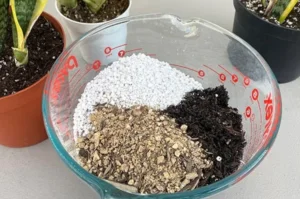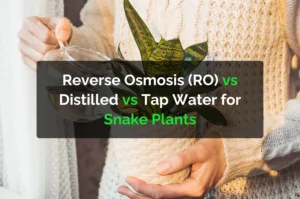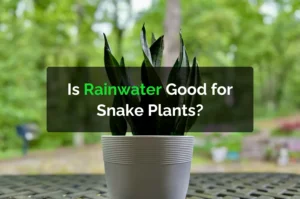Snake plants, also known as Sansevieria or Dracaena trifasciata, are famous for being hardy, low-maintenance indoor plants. They’re a favorite for beginners and plant lovers who don’t have a lot of time. But even the toughest plants need some attention. One question many plant owners ask is: Do snake plants like to be misted?
The short answer is no, snake plants don’t usually like to be misted. In this article, we’ll explain why misting isn’t ideal for snake plants, what kind of environment they prefer, and how you should be caring for them instead.
Understanding the Snake Plant’s Natural Habitat
To understand why misting may not be beneficial, it helps to know where snake plants come from. These plants are native to dry regions of West Africa, where humidity is low and rainfall is scarce. They’re adapted to survive in arid conditions and have thick, fleshy leaves that store water, just like cacti or succulents.
This means they are drought-tolerant and don’t need constant moisture on their leaves or in the air. In fact, too much moisture can do more harm than good.
Why Misting Isn’t Recommended for Snake Plants
1. Risk of Fungal Diseases
Snake plants are prone to leaf rot and fungal infections if moisture sits on their leaves for too long. Misting regularly increases the chance of moisture staying trapped between the leaves, especially in the crown (the center of the plant). Over time, this can lead to mold, mildew, and root rot.
2. Not Effective for Increasing Humidity
Many people mist plants to raise humidity levels. While this can help with tropical plants, misting has little to no long-term effect on humidity. The air dries quickly, and the plant only gets a surface-level dampness, which snake plants don’t need in the first place.
3. Snake Plants Absorb Moisture Through Roots, Not Leaves
Like most plants, snake plants take in water mainly through their roots. Misting the leaves doesn’t do much for their hydration needs. Instead, it can interfere with their natural rhythm and even invite pests like gnats or mites.
When (If Ever) Should You Mist a Snake Plant?
While misting is not a standard care practice for snake plants, there may be a few rare situations where a light mist can be helpful:
- Cleaning Dust Off the Leaves: Sometimes, snake plant leaves collect dust. A light spray followed by wiping the leaves gently with a soft cloth can help clean them. Just make sure the leaves dry completely afterward.
- Boosting Humidity in Extremely Dry Climates: If your home has very dry air, especially during winter, a little misting might give the plant a temporary moisture boost. But even in this case, it’s safer to use other humidity methods (like a humidifier) than misting.
- During Leaf Propagation: If you’re propagating snake plant leaves in a tray or shallow soil, a very light mist on the surface of the cutting can help keep the area moist during the early stages.
Better Alternatives to Misting
If you feel like your snake plant needs more moisture, there are better and safer alternatives to misting.
1. Proper Watering
Water your snake plant only when the top 2–3 inches of soil are dry. Overwatering is one of the most common ways to harm a snake plant. Always use a pot with drainage holes and a well-draining soil mix (like cactus or succulent soil).
2. Use a Humidifier
If your home is extremely dry, a humidifier is a better tool to improve air moisture without directly wetting the plant. Place the humidifier near your plants, and it will provide consistent, safe humidity.
3. Pebble Tray
Place a tray of water with pebbles underneath your snake plant’s pot (but not touching the roots). As the water evaporates, it increases the humidity around the plant, no misting required.
How Much Humidity Do Snake Plants Need?
Snake plants prefer low to moderate humidity, ideally around 30% to 50%. Most indoor environments naturally fall within this range, so you usually don’t need to adjust anything.
In homes where the air is especially dry (below 30% humidity), you can consider using the above methods to slightly raise humidity. But again, misting is not the answer.
Common Mistakes to Avoid
Misting Snake Plants Daily
This does more harm than good and encourages fungal problems.
Overwatering Due to Misreading Humidity
Just because the air feels dry doesn’t mean your snake plant needs water. Always check the soil.
Using Tap Water for Misting
If you do mist (for cleaning or special cases), avoid using hard tap water, which can leave white spots on the leaves. Use filtered or distilled water instead.
Final Verdict: To Mist or Not to Mist?
Snake plants do not like to be misted regularly. They thrive in dry conditions and don’t benefit from leaf moisture like tropical houseplants do. Misting can lead to rot, pests, and disease, all things that are easily avoided by following the right care routine.
If you want your snake plant to thrive, focus on proper watering, well-draining soil, and allowing the plant to dry out between waterings. If your air is extremely dry, a humidifier or pebble tray is a much safer option than spraying water on the leaves.
Conclusion
Snake plants are tough, reliable, and beautiful houseplants, and part of their charm is how little they demand from you. Forget the misting bottle and keep things dry and simple. Your snake plant will thank you with tall, strong, and healthy leaves for years to come.






